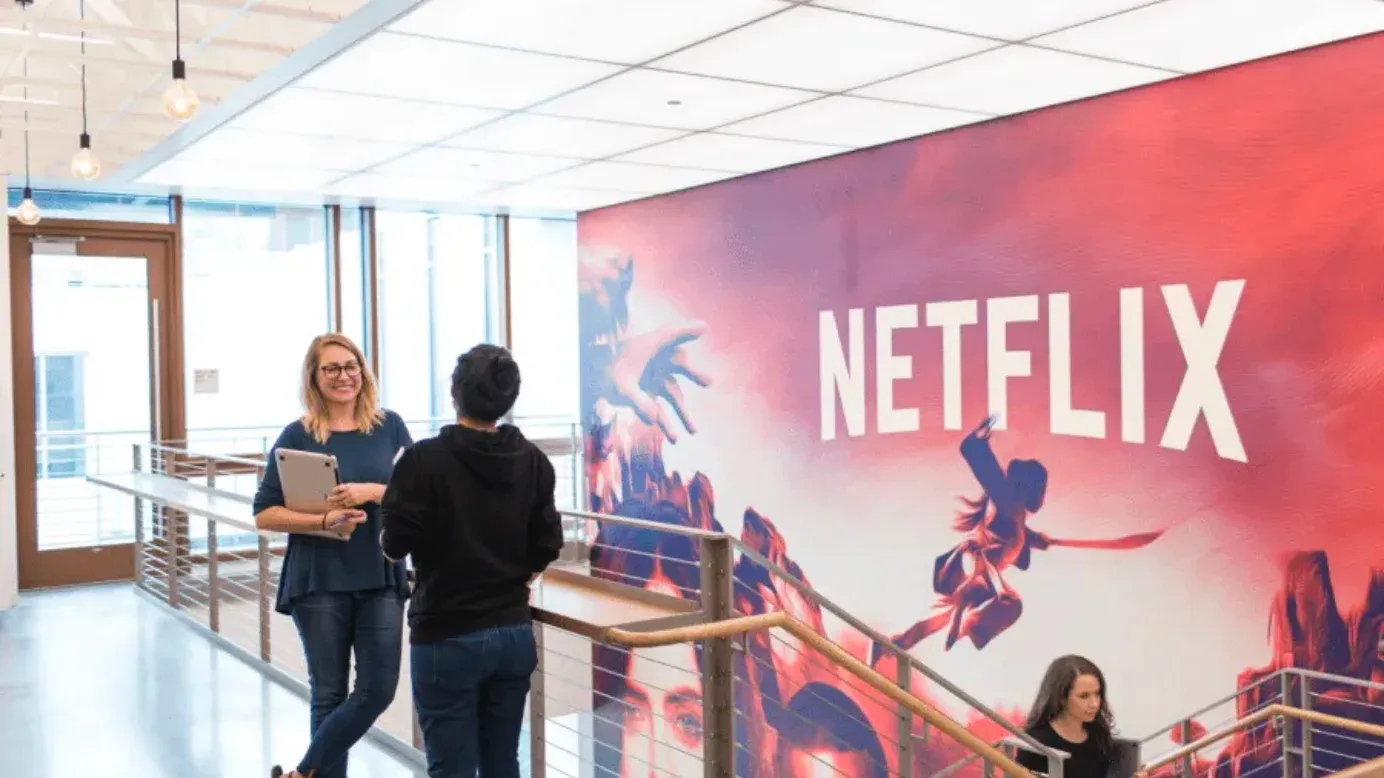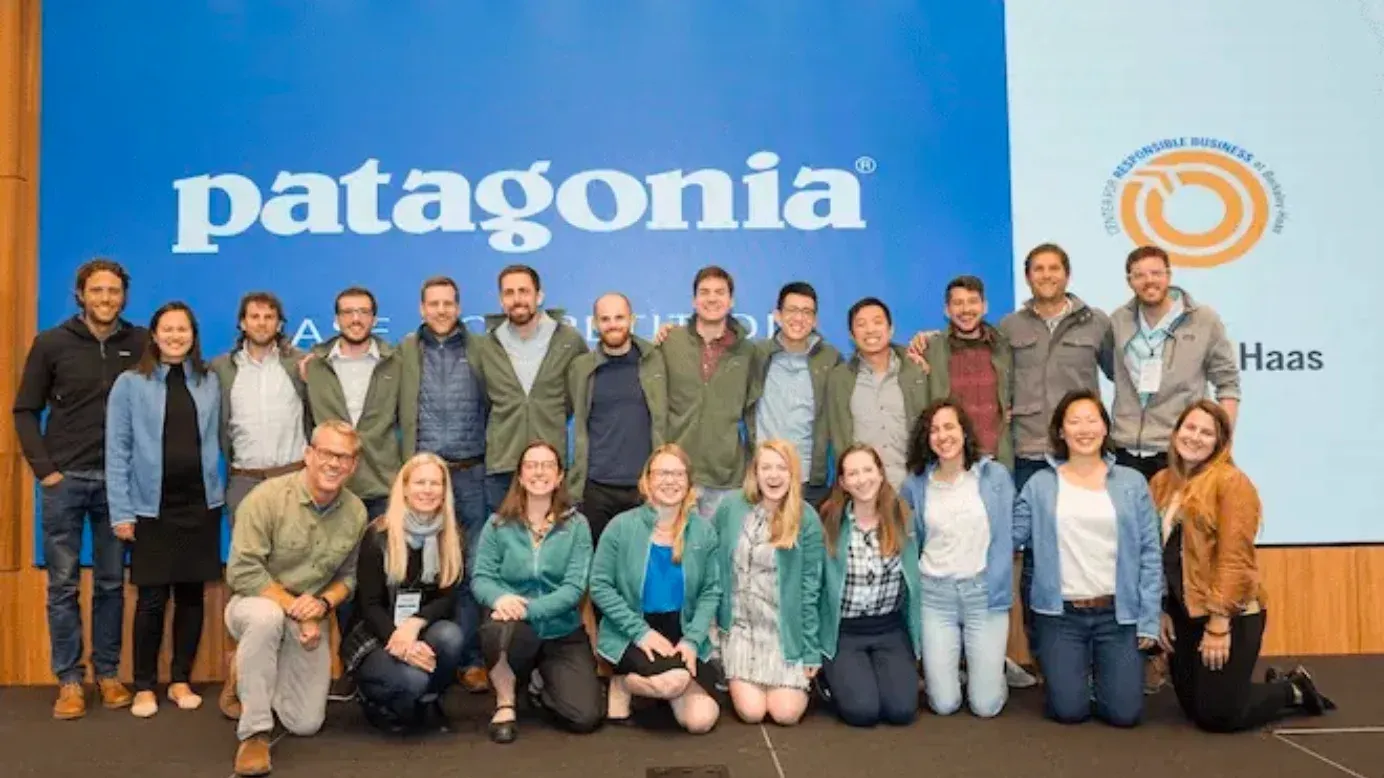What is Culture Fit How to Assess it to Build a Strong Workplace Culture
Learn how to assess culture fit in hiring, improve workplace alignment, and build a strong organizational culture that enhances employee engagement and retention.
On this page
- What is culture fit?
- Why culture fit matters
- How culture fit shapes company culture
- Understanding the link between culture fit and employee retention
- How to foster culture fit for employee retention and engagement
- Cultural fit assessment tests and methods
- Real-world examples of successful culture fit implementation
- Conclusion
Over the last five years, there has been a growing awareness of the substantial impact that organizational culture can have. A case in point is the profile of Amazon and its founder, Jeff Bezos, in The New Yorker.
Despite being one of the most successful companies of the past two decades, the article focused less on their impressive one-day delivery or logistical feats and more on the construction of their culture around 14 key principles. Amazon deliberately hired individuals who aligned with these principles, emphasizing the importance of "cultural fit."
Given the success of companies like Amazon, which generated $386 billion in revenue during a pandemic, the concept of "hiring for cultural fit" has been a prominent topic in the last decade. However, this emphasis on cultural fit has raised concerns about potential biases in the hiring process.
Critics argue that it may lead to a culture of groupthink, hindering the emergence of new and innovative ideas. Diversity, equity, and inclusion (DEI) professionals often approach the term cautiously as it suggests excluding individuals based on vague, non-data-linked reasons such as "He/she seems like us!"
More often than not, the term "cultural fit" falls short of signalling a commitment to fostering an inclusive environment.
The concept of culture-fit hiring revolves around ensuring a harmonious match between the candidate and the values and norms of the business. This approach is bidirectional – not only are employers seeking candidates who fit their culture, but prospective employees, especially Millennials and Gen Z, are also actively researching and evaluating the cultural alignment of potential employers.
This blog will delve into the precise meaning of cultural fit and explore the reasons why it holds paramount importance for businesses in the contemporary landscape.
What is culture fit?
Culture fit refers to the alignment between an individual's values, beliefs, and behaviors with those of an organization. It is not solely about matching skills and qualifications but rather finding candidates who resonate with the company's mission, vision, and working environment.
Why culture fit matters
In today's business world, companies are not just looking for qualified individuals to fill job roles; they are seeking candidates who align with their organizational culture. This emphasis on "culture fit" has become a pivotal factor in shaping the success and cohesion of a company. Here is why culture fit matters.
- Enhanced employee engagement: When employees connect with the values and goals of their workplace, they are more likely to be engaged and motivated. This engagement contributes to higher levels of productivity and job satisfaction.
- Reduced turnover: Hiring individuals who fit well with the company culture reduces the likelihood of turnover. Employees who feel a sense of belonging are more likely to stay with the organization in the long run, leading to cost savings on recruitment and training.
- Improved collaboration: A cohesive company culture fosters teamwork and collaboration. When employees share common values, they are better equipped to communicate effectively, work together seamlessly, and achieve collective goals.
- Boosted innovation: Diverse perspectives can fuel innovation, and a culture that encourages open communication and diverse thinking can lead to creative problem-solving. However, the key is to maintain a balance where individuality complements the overall cultural fabric.
How culture fit shapes company culture
Culture fit isn’t just about hiring people who share the same values—it’s about creating a workplace where employees naturally connect, collaborate, and thrive. When people align with the company’s ethos, they bring energy, purpose, and a shared sense of mission to their work.
Teams communicate more effectively, decision-making becomes seamless, and engagement skyrockets. Employees who feel a genuine cultural connection aren’t just working for a paycheck; they’re invested in the company’s success. This fosters a dynamic, adaptable environment where innovation flourishes and retention rates climb.
A strong culture fit doesn’t mean sameness—it means bringing together diverse perspectives under a unified vision, turning an organization into a thriving, purpose-driven ecosystem.
Understanding the link between culture fit and employee retention
Culture fit is more than just a checkbox on a hiring checklist. It's about ensuring that an employee's values, beliefs, and working style align seamlessly with the organization's ethos. When individuals resonate with the culture, they become more than just employees—they become ambassadors of the company's mission.
The link between culture fit and employee retention is a powerful force shaping the future of work. It's not just about finding the right skills; it's about finding the right fit for the individual within the organization's cultural tapestry.
1. Job satisfaction: where culture fit takes center stage
Job satisfaction is a cornerstone of employee retention. When employees feel a deep connection to the organization's culture, they're more likely to find meaning and fulfillment in their work. This sense of purpose is a powerful motivator that goes beyond the confines of a job description, fostering a positive and productive work environment.
2. The glue of organizational commitment
Commitment to an organization is a reciprocal relationship. Culture fit cultivates a sense of belonging, making employees more committed to the company's success. This commitment becomes a stabilizing force, reducing the likelihood of turnover even in the face of challenges or changes.
3. Building resilience: reducing turnover through culture fit
One of the most tangible benefits of a strong culture fit is a reduction in turnover. Employees who feel integrated into the organizational fabric are more likely to weather storms, overcome obstacles, and stay the course. The result is a more stable workforce that contributes to the overall resilience of the company.
4. Harmony in teams: collaboration and culture fit
Effective collaboration is the lifeblood of successful teams. Culture fit promotes positive interactions among team members by aligning their values and ways of working. When a team operates cohesively, it not only enhances job satisfaction but also fortifies the bonds that keep employees invested in their roles.
5. Engagement: the ripple effect of cultural alignment
Employee engagement is a natural byproduct of culture fit. Engaged employees are not just clocking in; they're investing their time and energy in their roles. This heightened level of engagement cascades throughout the organization, leading to increased productivity, better performance, and ultimately, higher retention rates.
6. Striking a balance: diversity and inclusion in culture fit
While culture fit is undeniably critical, organizations must strike a delicate balance by also valuing diversity and inclusion. A healthy organizational culture embraces different perspectives and backgrounds, fostering an environment that is both cohesive and innovative.
How to foster culture fit for employee retention and engagement
Here is how to foster culture fit for employee retention and engagement.
1. Transparent communication
Clearly communicate your company culture during the hiring process and throughout the employee lifecycle. This transparency helps individuals self-select into environments where they can thrive, reducing the chances of mismatched expectations.
2. Invest in onboarding
An effective onboarding process that introduces new hires to the company's values, mission, and working norms is crucial. This helps employees acclimate to the culture and fosters a positive early experience, setting the tone for their tenure.
3. Regularly assess and evolve
Company cultures can evolve, and it's essential to periodically assess and, if necessary, adapt the culture to meet the changing needs of both the organization and its employees. This adaptability ensures that the culture remains a positive force for retention.
4. Recognition and rewards
Acknowledge and reward employees who exemplify the company's values. Recognition reinforces cultural alignment and motivates individuals to continue contributing positively to the organization.
Beyond the qualitative benefits, the impact of a strong culture fit on the bottom line should not be underestimated. The cost of employee turnover, including recruitment, training, and lost productivity, can be substantial.
By prioritizing culture fit, organizations can reduce turnover rates, ultimately saving resources and fostering a stable and productive workforce.
Cultural fit assessment tests and methods
Finding the right candidate isn’t just about skills and experience—it’s about ensuring they align with the company’s values, work environment, and team dynamics.
A strong cultural fit assessment helps organizations hire employees who adapt seamlessly, collaborate effectively, and contribute to a positive workplace culture. Here are some effective ways to assess cultural fit:
1. Behavioral interviews
Behavioral interviews focus on past experiences to predict future performance. Candidates are asked to share real-life examples of how they handled specific workplace situations, such as conflict resolution, teamwork, or leadership challenges. Their responses offer insights into whether their work ethic and decision-making align with company values.
2. Situational judgment tests (SJT)
Situational judgment tests present candidates with workplace scenarios and multiple-choice responses. These tests measure how applicants approach problem-solving, collaboration, ethical dilemmas, and decision-making. Employers can analyze responses to determine whether the candidate's thought process aligns with company culture and expectations.
3. Personality assessments
Personality tests help gauge how individuals interact with colleagues, handle stress, and adapt to different work environments. Assessments like MBTI (Myers-Briggs Type Indicator), Big Five Personality Traits, and DiSC profiling provide insights into whether a candidate thrives in structured, fast-paced, or creative work settings. These tools also help identify how well a candidate fits into team dynamics.
4. Cultural fit questionnaires
A structured cultural fit questionnaire helps companies understand how well a candidate’s values, work style, and motivations align with the organization. Questions often cover topics such as preferred management styles, teamwork preferences, and communication approaches. Candidates' responses can indicate whether they would integrate well into the existing team.
5. Group exercises and role plays
Group exercises allow candidates to interact with potential teammates in a realistic work setting. Role plays, case studies, or team problem-solving tasks help assess communication, leadership, adaptability, and teamwork skills. Observing how candidates collaborate provides a strong indication of cultural fit.
6. Employee referral feedback
Employee referrals often bring in candidates who already have a basic understanding of the company culture. Asking current employees for feedback after an interview or informal meeting can help assess whether the candidate would integrate well into the team. Employees who understand the work culture can offer valuable perspectives on a potential hire’s compatibility.
7. Trial work periods
Some companies opt for short-term projects or probationary periods to evaluate cultural fit in action. Candidates are given real tasks and work closely with the team before a full-time offer is extended. This approach helps both employers and candidates determine whether the work environment is a good fit.
8. Surveys for measuring cultural fit
Surveys provide a structured way to gather employee insights on workplace culture and identify the traits that contribute to a successful team fit. Organizations can use Empuls surveys to assess how employees perceive the company culture, leadership style, and team dynamics. Candidate responses can be compared to existing employee feedback to see if they align with the workplace environment.
9. Pulse surveys for ongoing cultural assessment
Cultural fit isn’t just relevant during hiring—it plays a role in long-term employee engagement. Empuls pulse surveys help organizations track whether employees feel aligned with company values over time. Regular feedback allows HR teams to adjust policies, improve engagement, and maintain a strong workplace culture.
Using a combination of these cultural fit assessment methods helps companies build teams that are not only skilled but also aligned with the mission, values, and collaborative spirit of the organization.
Real-world examples of successful culture fit implementation
To better understand how culture fit influences the success of an organization, let's examine concrete instances of companies that have embraced and successfully put culture fit principles into practice in their day-to-day activities.
1. Zappos

Zappos, an online shoe and clothing retailer, is well-known for its strong emphasis on company culture. The CEO, Tony Hsieh, prioritized culture fit during the hiring process. Zappos has a set of core values that are not just words on paper but are actively lived by the employees.
They even offer new hires a cash bonus if they decide to leave the company within the first few weeks, ensuring that only those who truly align with the company's values stay on board. This commitment to culture fit has contributed to Zappos' success and reputation for excellent customer service.
2. Netflix

Netflix is another example of a company that places a significant emphasis on culture fit. The streaming giant is known for its "Culture Deck," a document created by Reed Hastings, the co-founder and CEO, which outlines the company's values, expectations, and overall work philosophy.
Netflix's culture encourages innovation, freedom, and responsibility, and they actively seek employees who resonate with these principles. This approach has allowed Netflix to attract and retain talent that aligns with their culture, contributing to their success in the highly competitive tech and entertainment industries.
3. Southwest Airlines

Since its founding in 1971, Southwest Airlines has prioritized fostering a playful culture, initially relying on flight attendants for in-flight entertainment through creative gestures. Co-founder Herb Kelleher, known for his playful antics, emphasized the power of fun and prioritized hiring for attitude, particularly a sense of humor, over technical skills.
Today, Southwest continues to prioritize attitude in its hiring approach, looking for individuals with a "warrior spirit, servant’s heart, and fun-LUVing attitude." The rigorous hiring process ensures both consistent service quality and authenticity among employees, allowing them to be their true selves.
This approach has led to notable moments, such as viral safety instructions and humorous announcements, reflecting Southwest's commitment to creating memorable experiences for passengers.
4. Google

Google is known for fostering a dynamic and innovative work environment, and its culture fit plays a crucial role in maintaining this atmosphere. The company places a strong emphasis on hiring individuals who not only have the necessary technical skills but also demonstrate a passion for creativity, collaboration, and a willingness to take on ambitious projects.
Google's work culture encourages employees to think outside the box, take risks, and contribute to a collaborative and supportive community. This commitment to cultural alignment has contributed to Google's success as a leader in the tech industry.
5. Patagonia

Patagonia, the outdoor clothing and gear company, is well-known for its commitment to environmental sustainability and social responsibility. The company actively seeks employees who share these values and have a passion for the outdoors.
Patagonia's culture encourages a balance between work and personal interests, and the company is known for providing employees with perks such as on-site childcare and the opportunity to take part in environmental initiatives during work hours. This strong cultural alignment has not only helped Patagonia attract like-minded individuals but has also contributed to the company's success as a socially and environmentally conscious brand.
6. HubSpot

HubSpot, a leading inbound marketing and sales software company, places a high value on creating a positive and inclusive work environment. The company actively promotes a culture of transparency, autonomy, and continuous learning.
HubSpot's commitment to culture fit is evident in its emphasis on hiring individuals who align with its "HEART" values (Humble, Empathetic, Adaptable, Remarkable, Transparent). This focus on cultural alignment has contributed to high employee satisfaction and has played a role in HubSpot's recognition as a great place to work in various industry rankings.
Conclusion
Culture fit plays a pivotal role in shaping the success and identity of a company. By hiring individuals who align with the organization's values and goals, companies can build a cohesive and motivated workforce.
However, it's crucial to strike a balance, embracing diversity and fostering an inclusive environment to drive innovation and long-term success. As the business world continues to evolve, understanding and prioritizing culture fit will be key to unlocking the full potential of both individuals and organizations.


















